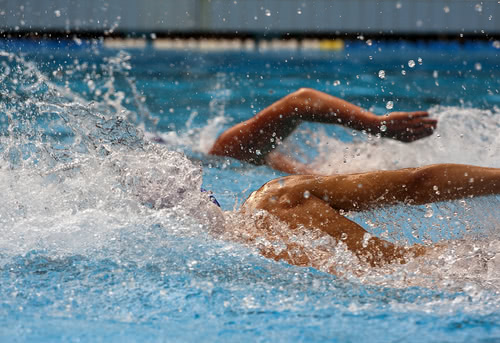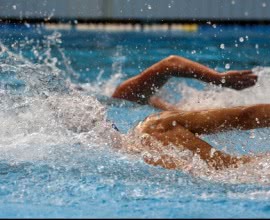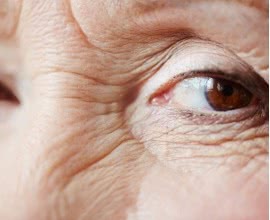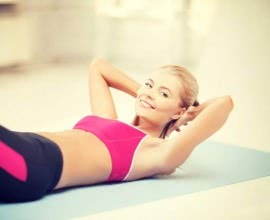VARICOSE VEINS AND SPORT
Once you find out you have varicose veins, it's time to fully reconsider the exercising routine. Unfortunately, not every exercise is good for your sick veins. Running is too high-impact, as “pounding the pavement” aggravates the swelling of the affected veins. Weightlifting (doesn't actually matter if performed by legs or arms!) creates straining in a body which can reduce the flow out of your limbs returning to your heart. Even yoga which seems to be a harmless sport, requires prolonged posturing which might affect the blood flow in a negative way.
The good news is though that once varicose veins are successfully treated, you can go back to your normal exercises when the recovering time is over.
The ultimate goal of any exercise which is beneficial for varicose veins, is to support blood circulation in the legs which is otherwise poor. In the same time, exercises should be gentle and not too strenuous so it doesn't create too much pressure in legs, and subsequently doesn't hamper the blood's ability to flow through veins.
1. If You're a Gym Addict...
… and weight lifting and running are a part of your gym routine, you should then replace it by gentle jogging on a softer surface and lifting much lighter weights when keeping your legs at the same level or higher than your heart. Wearing compression stockings can also help.
2. L for Leg Lifting
What is this L in relation to exercising? It's a position of your body when you're lying on the floor and your legs are raised perpendicular to the ground. When exercising or not, L is a basic posture which plays a crucial role in varicose veins reduction.
Everybody who suffers from varicose veins, knows that feeling of “big tired legs” at the end of the day when you think they have doubled in their size since the morning. Not everybody knows though that the best cure is to make an L for 10-15 mins, and the feeling will (for the most part) be gone.

It's not recommended taking a hot bath when you have varicose veins. However, you can minimize this harmful effect by lifting your legs up while in a bath and leaning them against the wall, so it's only your upper body which “takes a bath”, not your legs. By the way, smaller bath tubes we all complain about, those tightly placed between two walls in our bathrooms, are surprisingly in a winning position here.
L is also a starting position for the following anti-varicose veins exercise. Make an L and put your hands under your buttocks to support them. Lift one leg at a time and keep it up until you feel blood dropping from your feet to your thighs. Repeat with one leg at a time.
In general, keep your legs elevated whenever it's only possible.
3. Small Daily Efforts
When there's no time, discipline, or simply desire to exercise (which, honestly, all means the leg pain varicose veins give is still tolerable), you can simply keep your legs in constant motion by walking which is the simplest, but also the most effective exercise for improving the leg blood circulation. All those well-known basics will help: walking up the stairs instead of taking the elevator, going for a little stroll... Those small daily efforts will smoothly, but surely reward the most out of all other exercises. You won't even notice how much lighter you start feeling and how your legs are less and less congested.
4. At Work
Quit your nine-to-five daily job as it destroys human's health more than bigger life stresses. I'm kidding. Actually, I'm not kidding, I believe it's true, but I also understand it's not every time possible. Living your life in a sedentary style, is a sure way to the “grave” for your varicose veins long before their time. Poor blood circulation is very common in office workers. While you're still at your “nine-to-five”, use every little break to move: hold on tiptoes while sitting up straight, raise your calf when you're waiting by the printer or microwave, take a small ball (like a tennis ball) with you to the office, and squeeze it between your knees from time to time, lift your legs under your desk...
(By the way, so-called “deskersize” is a popular topic these days, with so many people struggling to fit exercise into their busy daily office schedule).
5. Don'ts
There are more exercises to avoid when you have varicose veins, and it's impossible to list all of them within the frames of one article. What is important to remember is that everything intense, hectic, high-impact, everything which makes your heart work as a huge pump and makes it difficult to breath, receives its “no”. On the opposite, all low-impact sports (such as, for example, swimming, cycling, and pilates) are very welcomed.

Apart from the already mentioned running and yoga, another big (and quite surprising) “no” is sit-ups. Pressure which is put on the abdomen while the exercise, slows the overall blood flow which endangers leg veins. Those who still want to do the abs, should at least put the compression garments, such as varicose veins socks, on the legs before.
Even though exercise cannot in any case replace varicose veins treatment, it can actually prevent their further development and reduce the pain and swelling associated with them. The most important thing to keep in mind is that vein exercise lies in the surface of medicine rather than in the surface of sport, and a doctor's consultation is the best first step to take towards healthy and beneficial workout.
Sources used:














